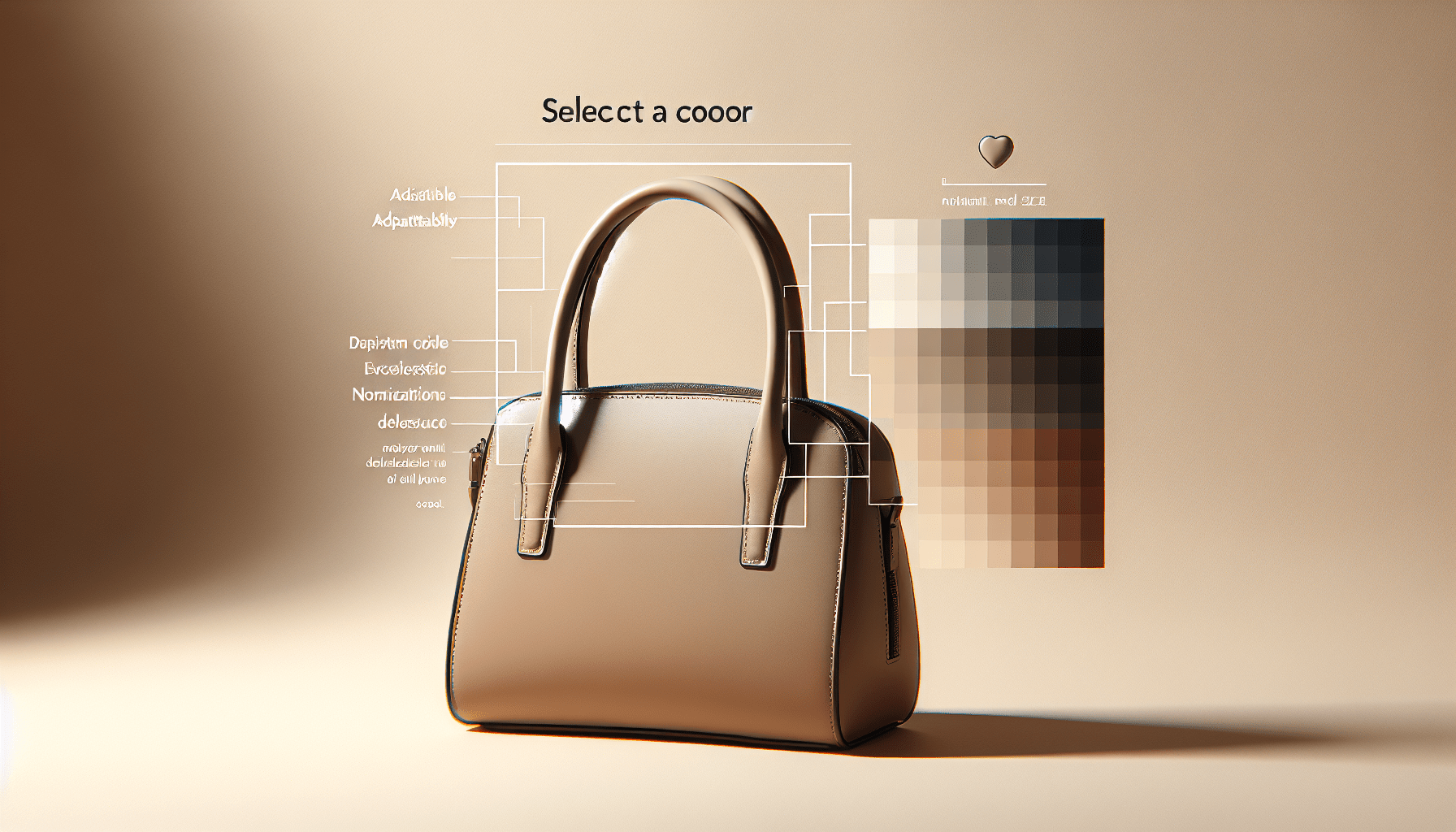How To Store Designer Handbags In Closet
So, you’ve invested in some beautiful designer handbags, and now you want to make sure they’re stored safely and neatly in your closet. Well, look no further! In this article, you will discover some clever tips and tricks on how to store your designer handbags in your closet, keeping them organized, protected, and ready to elevate any outfit you choose. From using dust bags and shelf dividers to maximizing shelf space and avoiding unnecessary damage, these simple yet effective strategies will ensure that your beloved handbags are always in pristine condition, so you can enjoy them for years to come.
Choosing the Right Closet
When it comes to storing your designer handbags, the first step is to choose the right closet. Consider the space available in your home and ensure that the closet is spacious enough to accommodate your collection. You don’t want to overcrowd the bags, as this can lead to wrinkles and damage. Look for a closet that has enough room to hang the bags and store them properly.
Another important factor to consider is the lighting in the closet. Adequate lighting is essential to help you see and access your handbags easily. Make sure that the closet has proper lighting fixtures installed or consider adding additional lighting if needed. This will not only make it easier to find the bag you’re looking for but also enhance the overall look of your closet.
In addition to lighting, it is crucial to evaluate the temperature and humidity levels in your chosen closet. Extremes in temperature and humidity can have a negative effect on the quality and condition of your designer handbags. Opt for a closet that has a stable temperature and humidity levels, or consider installing a dehumidifier if your area tends to have high humidity. This will help prolong the lifespan of your treasured bags.
Preparing the Closet
Once you have chosen the perfect closet for your handbags, it’s time to prepare the space. Start by emptying and cleaning the closet thoroughly. Remove any items that may be occupying the space and give it a good clean. This will ensure that your handbags are stored in a clean and dust-free environment.
After cleaning, consider installing shelves or racks in the closet. This will provide you with a dedicated space to display your handbags and keep them organized. You can choose to install adjustable shelves to accommodate different bag sizes or opt for specific racks designed for handbag storage. This will not only help keep your bags in place but also make it easier to access and admire them.
In addition to shelves or racks, you can also utilize additional storage solutions such as hanging organizers, drawer dividers, or storage bins. These can be useful for storing smaller accessories like wallets, pouches, or cosmetic bags. By having designated storage for each item, you can ensure that everything has its place and is easily accessible when needed.
Organizing Handbags
Once your closet is prepared, it’s time to organize your handbags. Sorting your handbags by size or style can help create a visually appealing display. You can group the bags together based on their size, from small clutches to large totes. Alternatively, you can organize them by style, such as shoulder bags, crossbody bags, or tote bags. Find a method that works best for you and helps you easily locate the bag you’re looking for.
To further organize your handbags, consider utilizing dividers or compartments. These can be installed within the shelves or racks to divide the space and keep the bags separate. Dividers can prevent the bags from touching each other, reducing the risk of scratches or damage. Compartments, on the other hand, can provide individual spaces for each bag, ensuring they stay in place and are easily accessible.
If you have a large collection of handbags and find it difficult to locate a specific bag, consider color-coding your collection. Assign different colors to different types of bags or brands. This can make it easier to find the bag you’re looking for at a glance. It also adds a visually appealing element to your closet, turning it into a beautiful and organized display.
Protecting Handbags
To ensure that your designer handbags remain in excellent condition, it’s essential to take proper measures to protect them. One simple way to protect your bags is by using dust bags or pillowcases. These protective covers can prevent dust from settling on the bags and keep them safe from accidental spills or damage. Make sure to store each bag in its individual dust bag or pillowcase for maximum protection.
Another tip to protect your handbags is to stuff them when not in use. This helps them maintain their shape and prevents them from developing creases or wrinkles. Use tissue paper, bubble wrap, or even old t-shirts to stuff the bags gently. Make sure not to overstuff, as this can put unnecessary pressure on the bag’s structure. Properly stuffed bags will retain their shape and look as good as new when you’re ready to use them again.
When storing your handbags, it’s important to keep them away from sunlight and excessive heat. Direct sunlight can fade the colors and damage the fabric or leather of your bags. Excessive heat can also cause the leather to crack or warp. Choose a closet that is away from windows or any sources of direct sunlight. Additionally, avoid storing your bags near radiators or heat sources, as this can also cause damage over time.
Maintaining Handbags
Proper maintenance of your designer handbags is crucial to keep them looking their best. Regularly cleaning the interior of your bags can help remove any dirt or debris that may have accumulated over time. Use a soft cloth or a specialized bag cleaner to gently wipe the interior of each bag. Pay attention to the corners and crevices to ensure a thorough cleaning. Avoid using harsh chemicals or abrasive materials, as these can damage the bag’s interior.
For leather bags, it is important to condition them periodically. Leather is a natural material that requires moisturizing to prevent drying and cracking. Use a leather conditioner recommended by the manufacturer and apply it according to the product instructions. This will help restore and maintain the suppleness of the leather, keeping your bags in top-notch condition.
To prevent excessive wear on a particular bag, it’s advisable to rotate your handbags periodically. Alternating the bags you use will distribute the wear and tear more evenly, prolonging the lifespan of each bag. It also gives you the opportunity to showcase different styles and designs, adding variety to your outfits. By rotating your handbags, you not only protect them but also get the most out of your collection.
Avoiding Common Mistakes
While it’s important to focus on the right way to store your handbags, it’s equally crucial to avoid common mistakes. One common mistake is overcrowding the closet. When the bags are packed tightly, they can rub against each other, causing friction and potentially damaging the bags. Leave adequate space between each bag to ensure they have room to breathe and prevent any unnecessary wear or tear.
Another mistake to avoid is hanging delicate bags. Delicate fabrics or materials can stretch or warp when hung, especially if they are heavy or have long straps. Consider storing delicate bags horizontally on shelves or using specialized storage solutions designed to support them. This will help maintain the integrity of the bag and prevent any unwanted damage.
When it comes to storage, avoid using plastic bags. While it may seem convenient to store your bags in plastic, this can actually be harmful. Plastic bags can trap moisture and cause the bags to develop a musty smell over time. Opt for breathable storage solutions, such as dust bags or pillowcases, to allow the bags to air out. This will help preserve the quality and freshness of your handbags.
Storing Clutches and Small Bags
Clutches and small bags require a slightly different storage approach compared to larger handbags. Utilizing drawer dividers can help keep these smaller bags organized and easily accessible. Place dividers within the drawer to create individual compartments for each clutch or small bag. This will prevent them from getting lost or tangled with other items in the drawer.
Consider using acrylic boxes for storing clutches and small bags. These transparent boxes provide a clear view of your collection while keeping them protected from dust and potential damage. Assign each box to a specific type or color of bag to make organization even easier. Stack the boxes vertically to maximize space and create a visually appealing display in your closet.
Storing Tote Bags
Tote bags are known for their spaciousness and versatility, but they can also take up a lot of closet space. To store your tote bags efficiently, utilize shelves or hanging hooks. Shelves provide a designated space to neatly stack your totes. Make sure to arrange them in a way that allows easy access and prevents them from toppling over.
When storing larger totes, it’s important to stuff them with tissue paper to maintain their shape. The tissue paper supports the bag’s structure and prevents it from slouching or losing its form. Pay special attention to the handles and any decorative elements to ensure they do not get damaged during storage.
If space is a concern, consider folding the tote bags flat. This can help save space and allow you to store more totes in the same area. However, be cautious when folding the bags to avoid any creases or wrinkles. Choose a folding method that preserves the bag’s shape and minimizes the risk of damage.
Storing Crossbody Bags
Crossbody bags are a popular choice for their convenience and versatility. To keep your crossbody bags organized and easily accessible, consider hanging them on hooks within your closet. Choose sturdy hooks that can support the weight of the bags without causing damage. Hang each bag individually to prevent tangling or potential wear around the straps.
To protect your crossbody bags from dust and potential scratches, it’s advisable to keep them in dust bags. Place each bag in its respective dust bag before hanging it on the hook. This will help maintain the bag’s condition and preserve its longevity. Make sure to position the bags on the hooks in a way that keeps the straps free from any unnecessary stress or strain.
Pay attention to the placement of the straps when hanging crossbody bags. To prevent the straps from becoming misshapen or indented, ensure they are positioned in a natural manner. Avoid twisting or folding the straps, as this can weaken the material and affect the overall durability of the bag.
Storing Shoulder Bags
Shoulder bags are a classic accessory that adds elegance to any outfit. To store your shoulder bags properly, you can hang them on sturdy hooks within your closet. Make sure the hooks are strong enough to support the weight of the bags without causing any damage. Hanging the bags will keep them visible and easily accessible, while also preventing any creases or wrinkles.
When hanging shoulder bags, avoid placing heavy items on top of them. The weight of these items can cause unnecessary pressure on the bags and lead to distortion or sagging. Ensure that the shoulder bags have enough space around them to hang freely, without any obstructions or additional weight.
Consider using shelf dividers to further organize your shoulder bags. These dividers can be inserted vertically on the shelves to create separate sections for each bag. This prevents the bags from leaning into each other and maintains their shape. It also makes it easier to find and retrieve a specific shoulder bag without disturbing the others.
In conclusion, choosing the right closet, preparing it adequately, and organizing your designer handbags with care are essential steps in storing them properly. By considering the space available, ensuring proper lighting, and evaluating temperature and humidity, you can create an ideal environment for your handbags. Emptying and cleaning the closet, installing shelves or racks, and utilizing additional storage solutions will help you prepare the space effectively. Sorting handbags by size or style, utilizing dividers or compartments, and considering color-coding can make organizing your collection a breeze. By using dust bags or pillowcases, stuffing bags to maintain shape, and avoiding sunlight and excessive heat, you can protect your handbags from damage. Regularly cleaning the interior, conditioning leather bags, and rotating handbags periodically will help maintain their quality. Avoiding common mistakes such as overcrowding the closet, hanging delicate bags, and using plastic bags for storage is also crucial. When it comes to storing clutches and small bags, utilize drawer dividers, acrylic boxes, and stack them vertically. For tote bags, use shelves or hanging hooks, stuff larger totes with tissue paper, and store them flat or folded to save space. To store crossbody bags, hang them on hooks, keep them in dust bags, and ensure proper strap placement. Lastly, for shoulder bags, hang them on sturdy hooks, avoid placing heavy items on top, and consider using shelf dividers. By following these guidelines, you can store your designer handbags in a way that keeps them safe, organized, and easily accessible for years to come.




